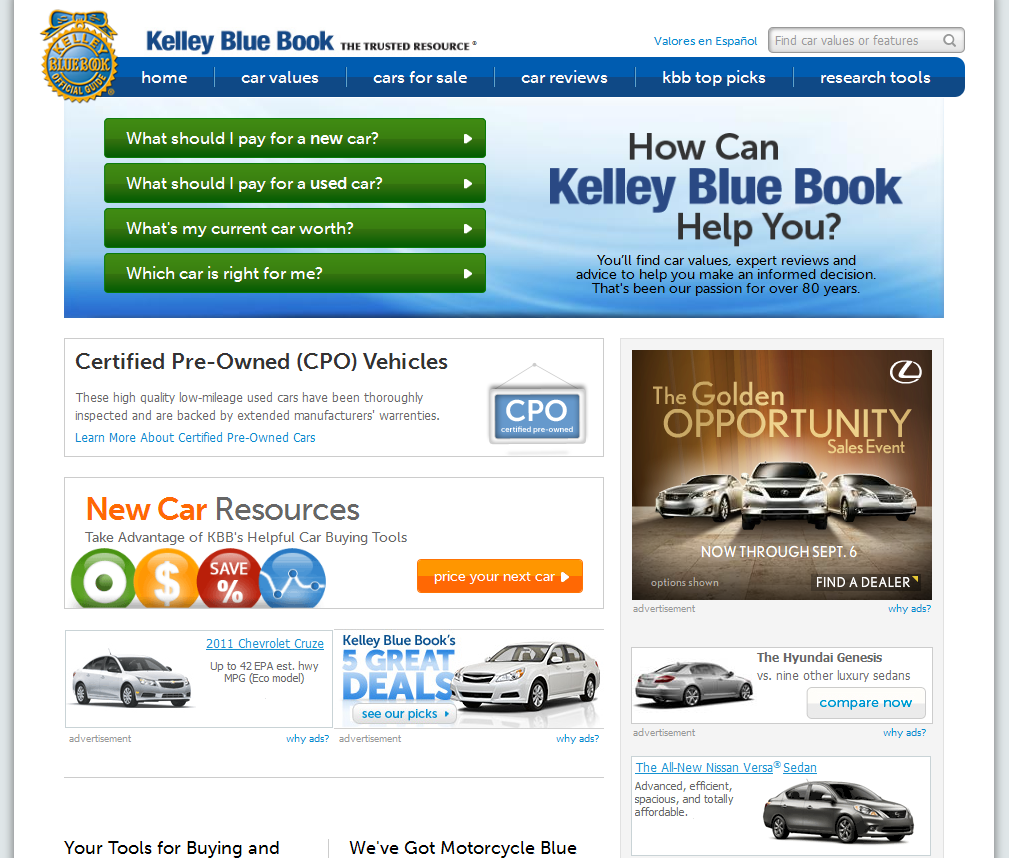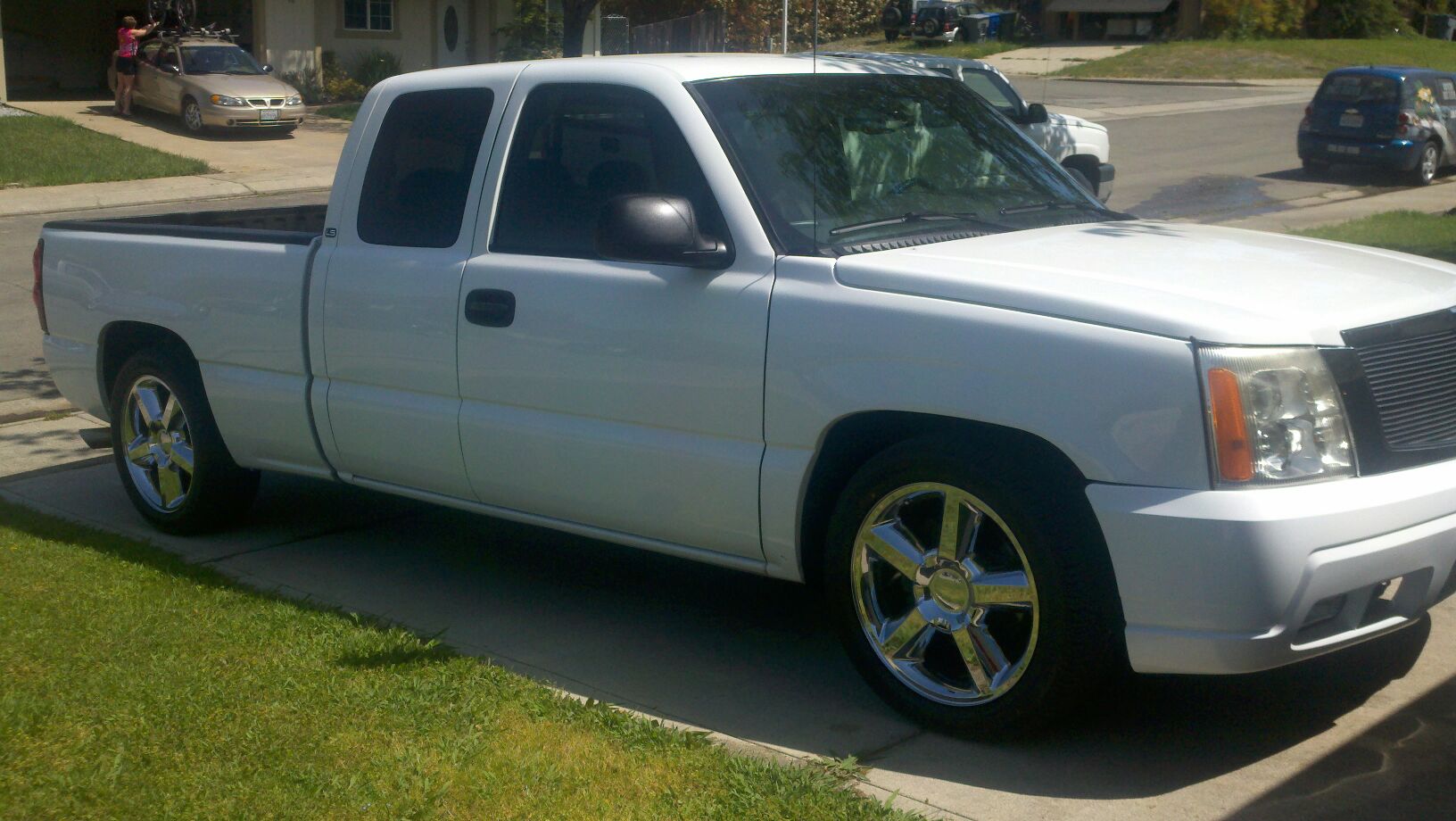KBB For Semi Trucks: Navigating the Complex World of Commercial Vehicle Valuation pickup.truckstrend.com
In the vast landscape of commercial transportation, a semi-truck is far more than just a vehicle; it’s a critical asset, a mobile business, and often, a significant investment. When it comes to buying, selling, insuring, or financing these behemoths, one question looms large: "What’s it truly worth?" While most consumers are familiar with Kelley Blue Book (KBB) for valuing passenger cars, the commercial trucking industry operates on a different plane. The concept of "KBB for semi-trucks" isn’t about a direct KBB product, but rather the essential need for a reliable, standardized, and comprehensive valuation methodology tailored specifically for heavy-duty commercial vehicles.
Understanding the true market value of a semi-truck is paramount for all stakeholders. For buyers, it ensures they don’t overpay; for sellers, it helps set realistic expectations and facilitates a quicker sale. Lenders rely on accurate valuations to assess collateral, while insurance companies use them to determine premiums and settle claims. Without a robust system akin to KBB, the semi-truck market would be a chaotic realm of guesswork and speculation. This article will delve into the intricacies of semi-truck valuation, exploring the specialized tools, key factors, and practical advice needed to navigate this complex yet crucial aspect of the trucking industry.
KBB For Semi Trucks: Navigating the Complex World of Commercial Vehicle Valuation
The Unique Challenges of Semi-Truck Valuation
Valuing a semi-truck is significantly more complex than appraising a passenger car, primarily due to the sheer number of variables involved and their profound impact on performance, longevity, and operational cost. Unlike cars, semi-trucks are purpose-built machines with highly specialized components and widely varying applications.
Key challenges include:
- Diverse Configurations: Semi-trucks come in countless configurations: day cabs, sleeper cabs (various sizes), heavy-haulers, vocational trucks (dump trucks, refuse trucks, mixers), and more. Each type has a distinct market and value.
- Engine & Drivetrain Specifics: The make, model, horsepower, and torque of the engine (e.g., Cummins, Detroit Diesel, PACCAR, Volvo, MaxxForce) drastically affect value. Transmission type (manual vs. automated manual) and axle configurations (e.g., 6×4, 8×4) also play a critical role.
- Mileage vs. Engine Hours: While mileage is a factor, engine hours are often more indicative of wear and tear, especially for trucks that idle frequently or operate PTOs (Power Take-Offs).
- Maintenance & Service Records: The quality and consistency of maintenance are paramount. A well-documented service history demonstrating proactive upkeep can significantly increase a truck’s value.
- Specialized Equipment: Features like wet kits, auxiliary power units (APUs), specific fifth wheel types, heavy-duty suspensions, or custom sleepers add significant value but are not universal.
- Emissions Systems: The type and condition of emissions systems (DPF, SCR, DEF) are crucial, as repairs can be costly, and older systems may face regulatory hurdles in certain areas.
- Market Dynamics: The value is heavily influenced by economic conditions, freight rates, fuel prices, and the supply and demand for specific truck types and components. Regional variations also exist.


"KBB Equivalents" and Valuation Resources for Semi-Trucks
Given KBB’s focus on consumer vehicles, the commercial trucking industry relies on specialized databases and market intelligence tools. These are the true "KBB for semi-trucks":
- Truck Blue Book (TBV): This is arguably the most direct equivalent to KBB for commercial vehicles. Published by Price Digests (formerly a division of Penton Media), Truck Blue Book provides comprehensive pricing data, specifications, and valuation tools for a wide range of medium and heavy-duty trucks, including semi-trucks. It offers values based on year, make, model, engine, transmission, mileage, and condition.
- EquipmentWatch: A leading provider of heavy equipment market data, EquipmentWatch offers valuation and specification data for construction, agricultural, and commercial vehicles, including semi-trucks. Their data is often used by lenders and insurers due to its robust methodology and historical tracking.
- Black Book (Commercial Vehicle Division): Known for its automotive valuations, Black Book also has a strong presence in the commercial vehicle market, offering weekly updates on wholesale and retail values for used trucks. Their data is particularly useful for dealers and auction houses.
- Auction Results: Major commercial vehicle auctioneers like Ritchie Bros. Auctioneers, IronPlanet, and others provide extensive databases of past auction results. These offer real-world, transaction-based pricing data, reflecting current market demand.
- Online Marketplaces & Dealerships: Websites like TruckPaper.com, CommercialTruckTrader.com, and MyLittleSalesman.com provide a snapshot of current asking prices. While these are not definitive valuations, they offer crucial comparative data. Reputable semi-truck dealerships also have extensive market knowledge and can provide appraisals.
- Industry Publications & Market Reports: Publications such as Trucks, Parts & Service magazine and various industry associations often publish market trend reports that can inform valuation decisions.

How to Value Your Semi-Truck: A Step-by-Step Guide
Accurately valuing a semi-truck requires a systematic approach, combining detailed vehicle information with market research.
-
Gather Comprehensive Vehicle Information:
- VIN (Vehicle Identification Number): Essential for accurate identification.
- Make, Model, Year: Basic identification.
- Engine Specifications: Make (e.g., Cummins, Detroit), model (e.g., ISX15, DD15), horsepower, torque.
- Transmission: Make, model, number of gears (e.g., Eaton Fuller 10-speed, Volvo I-Shift).
- Axle Configuration: (e.g., 6×4, 4×2), rear axle ratio.
- Mileage/Engine Hours: Record both if available. Engine hours are crucial.
- Sleeper Type/Cab Style: Day cab, short sleeper, mid-roof, condo.
- GVWR (Gross Vehicle Weight Rating): Important for vocational trucks.
- Tire Condition: Brand, size, and tread depth for all tires.
- Maintenance & Service Records: All receipts, service logs, and repair history. This is incredibly important.
- Accident History: Any major incidents and repairs.
- Specialized Equipment: List all added features (APU, wet kit, custom interior, reefer unit, etc.).
-
Assess the Truck’s Condition Thoroughly:
- Exterior: Inspect for rust, dents, paint condition, frame damage.
- Interior: Check cab cleanliness, seat wear, dashboard functionality, electronics.
- Mechanical: Look for fluid leaks, unusual noises, smoke from the exhaust. Test all major systems (brakes, lights, HVAC, power windows).
- Tires & Brakes: Critical safety and cost components.
- Under the Hood: Check fluid levels, belts, hoses, and general engine cleanliness.
- Categorize: Assign a condition rating (e.g., Excellent, Good, Fair, Poor) based on industry standards. Excellent usually means nearly new condition with flawless records; Good is well-maintained with normal wear; Fair has noticeable wear and tear, possibly needing repairs; Poor requires significant mechanical and cosmetic work.
-
Utilize Professional Valuation Tools:
- Input your gathered data into Truck Blue Book, EquipmentWatch, or Black Book Commercial. These platforms allow you to specify detailed configurations and conditions to generate a base value.
-
Cross-Reference with Market Data:
- Browse TruckPaper.com, CommercialTruckTrader.com, and recent auction results for comparable trucks (same make, model, year, similar mileage/hours, and condition). Note the asking prices and actual sales prices. Be mindful that asking prices can be higher than true market value.
-
Consider Regional and Economic Factors:
- Is there high demand for your specific type of truck in your region? Are freight rates up or down? Are fuel prices stable or volatile? These macro factors can sway value.
-
Adjust for Specifics:
- Add value for unique, desirable features (e.g., low-mileage engine rebuild, custom interior, high-end APU).
- Deduct value for known issues, missing components, or significant cosmetic flaws not accounted for in the base valuation.
Key Factors Influencing Semi-Truck Value
Beyond the basic year, make, and model, several specific attributes significantly sway a semi-truck’s market value:
- Engine & Transmission Pedigree: Certain engine and transmission combinations are highly sought after for their reliability, fuel efficiency, and ease of maintenance (e.g., pre-emissions engines, specific Cummins or Detroit models, Eaton Fuller transmissions).
- Mileage/Engine Hours: Lower hours and mileage almost always command higher prices. High mileage/hours necessitate major component overhauls or replacements, which buyers factor into their offer.
- Maintenance Records: A complete, verifiable history of preventive maintenance and professional repairs is invaluable. It demonstrates a truck’s longevity potential and responsible ownership.
- Tire Condition: A full set of new or nearly new tires can add thousands to a truck’s value, as they are a significant expense.
- Emissions System Compliance: Trucks with older, less efficient, or problematic emissions systems (e.g., pre-2010 models with certain EGR/DPF issues) may be valued lower due to potential maintenance costs or restrictions. Newer, compliant trucks often hold value better in regions with strict emissions laws.
- Overall Cosmetic & Mechanical Condition: While mechanical soundness is paramount, a clean, well-maintained exterior and interior signal pride of ownership and often correlate with better mechanical care.
- Fifth Wheel Type & Condition: Whether it’s a sliding or fixed fifth wheel, and its condition, impacts versatility and safety.
- APU (Auxiliary Power Unit): An APU significantly increases comfort and reduces fuel consumption from idling, making a truck more desirable.
- Truck Type & Application: Day cabs generally have a different market than sleeper trucks. Vocational trucks (dump, refuse) are valued differently based on their specific equipment and usage.
Benefits of Accurate Semi-Truck Valuation
The effort invested in accurate semi-truck valuation yields substantial benefits for all parties:
- For Sellers: Enables setting a competitive and realistic asking price, attracting serious buyers, and facilitating a quicker sale. It also helps in understanding depreciation for accounting purposes.
- For Buyers: Empowers informed decision-making, ensuring fair pricing and avoiding overpayment. It allows for better budgeting for potential repairs or upgrades.
- For Lenders: Provides a solid basis for loan collateral assessment, reducing risk and streamlining the financing process for both new and used truck purchases.
- For Insurers: Essential for determining appropriate coverage levels and for fair claim settlements in case of damage or total loss.
- For Fleet Managers: Critical for asset management, planning for replacements, tracking depreciation, and optimizing fleet utilization.
Potential Challenges and Solutions
Despite the available tools, valuing semi-trucks isn’t without its hurdles:
- Challenge: Lack of Standardized Data: Unlike passenger cars, semi-trucks have a vast array of custom options, modifications, and historical repair variations that can be hard to quantify.
- Solution: Be meticulously detailed in your vehicle description. Use high-quality photos and videos.
- Challenge: Market Volatility: Economic shifts, fuel price fluctuations, and changes in freight demand can cause rapid shifts in truck values.
- Solution: Check valuation tools and market data frequently. Be prepared to adjust your price based on current conditions.
- Challenge: Subjective Condition Assessment: What one person considers "good" condition, another might see as "fair."
- Solution: Be honest and objective. Better yet, get a third-party inspection from a reputable mechanic to back up your assessment.
- Challenge: Specialized Equipment Valuation: Accurately pricing unique or custom add-ons can be difficult.
- Solution: Research similar trucks with those features. Consider the cost of installation versus the depreciation of the equipment itself. Professional appraisals are highly recommended for heavily customized trucks.
Illustrative Semi-Truck Valuation Factors and Sample Price Ranges (Conceptual)
It is crucial to understand that the following table provides illustrative conceptual ranges only. Actual semi-truck values vary drastically based on specific engine type, transmission, axle ratio, exact mileage, maintenance history, regional demand, and current market conditions. Always use professional valuation tools like Truck Blue Book, EquipmentWatch, or Black Book Commercial for accurate pricing.
| Truck Type/Category | Year Range | Condition | Key Factors Considered | Estimated Price Range (USD) |
|---|---|---|---|---|
| Day Cab | 2015-2018 | Good | Mid-range engine, 800K-1M miles, well-maintained, standard features. | $25,000 – $45,000 |
| 2019-2022 | Excellent | Newer engine, <500K miles, complete service records, minimal wear. | $45,000 – $80,000 | |
| Sleeper (Mid-Roof) | 2014-2017 | Fair | High mileage (>1.2M), some cosmetic flaws, minor repairs needed, older emissions. | $20,000 – $35,000 |
| 2018-2021 | Good | Popular engine, 600K-900K miles, decent records, some wear. | $40,000 – $70,000 | |
| Sleeper (High-Roof/Condo) | 2016-2019 | Excellent | Premium engine, <700K miles, pristine condition, APU, full records. | $60,000 – $100,000+ |
| 2020-2023 | Like New | Low mileage (<300K), top-tier specs, all amenities, warranty potential. | $90,000 – $150,000+ | |
| Vocational (e.g., Dump Truck) | 2013-2016 | Good | Heavy-duty specs, 300K-500K miles, operational, some rust/wear. | $35,000 – $65,000 |
| 2017-2020 | Excellent | Lower hours, specific vocational package, well-maintained, ready for work. | $65,000 – $100,000+ |
Disclaimer: This table provides highly generalized ranges for illustrative purposes only. The actual value of any semi-truck is dependent on its unique specifications, exact condition, market demand at the time of sale, and many other nuanced factors. Always consult specialized valuation tools and obtain professional appraisals for precise values.
Frequently Asked Questions (FAQ) about Semi-Truck Valuation
Q1: Is Kelley Blue Book (KBB) accurate for valuing semi-trucks?
A1: No, Kelley Blue Book primarily focuses on consumer passenger vehicles. For semi-trucks and other commercial heavy-duty vehicles, you need to use specialized valuation tools like Truck Blue Book, EquipmentWatch, or Black Book Commercial Vehicle Division.
Q2: What is the best tool for valuing a used semi-truck?
A2: There isn’t one single "best" tool, but Truck Blue Book is widely considered the industry standard for published values. EquipmentWatch is excellent for broader heavy equipment, and Black Book Commercial provides timely market data. For real-world transaction prices, consulting auction results (e.g., Ritchie Bros.) and online marketplaces (e.g., TruckPaper) is also crucial.
Q3: How much does mileage/engine hours affect a semi-truck’s value?
A3: Significantly. Lower mileage (typically under 700,000 miles) and fewer engine hours will command a higher price. Over 1 million miles, a truck’s value drops considerably unless a major engine overhaul has been recently performed and documented. Engine hours are often more indicative of wear than mileage, especially for trucks that idle frequently.
Q4: Do maintenance records really matter for semi-truck value?
A4: Absolutely. Comprehensive and verifiable maintenance and service records are paramount. They provide a clear history of the truck’s health, demonstrating responsible ownership and proactive care, which can add significant value and instill buyer confidence. Trucks without records are often discounted heavily.
Q5: Should I get a professional appraisal for my semi-truck?
A5: For high-value transactions, unique or highly customized trucks, or for specific financial/insurance purposes, a professional appraisal from a certified heavy equipment appraiser is highly recommended. They can provide an unbiased, detailed valuation that holds weight with lenders and insurers.
Q6: How often do semi-truck values change?
A6: Semi-truck values are dynamic and can change frequently, influenced by economic factors like freight rates, fuel prices, interest rates, new truck production, and overall market demand. It’s advisable to check valuations regularly, especially if you plan to buy or sell.
Conclusion
The "KBB for semi-trucks" is not a single entity but a multi-faceted approach to valuation that acknowledges the unique complexities of heavy-duty commercial vehicles. Accurate valuation is the bedrock of intelligent decision-making in the trucking industry, empowering buyers, sellers, lenders, and insurers to operate with confidence and transparency. By leveraging specialized tools like Truck Blue Book and EquipmentWatch, meticulously gathering vehicle data, thoroughly assessing condition, and staying abreast of market trends, individuals and businesses can navigate the intricate world of semi-truck valuation successfully. In an industry where every asset counts, understanding the true worth of a semi-truck is not just helpful—it’s essential.



